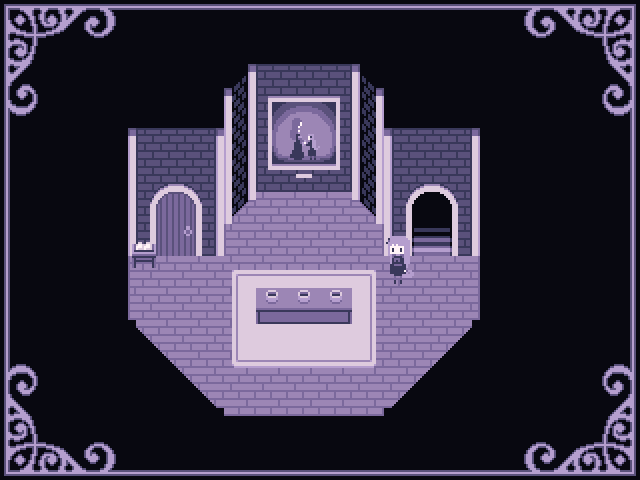
I wandered through the same rooms again, and again, and again, until I got so bored that I had to force myself to look at my surroundings in a new way: to walk backwards, to jump into an abyss, to look into a window over and over until it produced a new result.įor whatever reason, I never felt frustrated.
#UNDERMINE PUZZLE ROOMS WINDOWS#
That sounds like an analogy, but it’s not: the game has literal windows that change each time you look through them (and also change the contents of the rooms around them, each time, as well). I felt delight at the discovery of each new room, since each had forced me to follow a counter-intuitive path, like a window that changed its appearance each time I looked through it. I didn’t really care about the game’s ending, per se. I just wanted to see more of these rooms. Theoretically, I explored these rooms to get to the “end” of the game, but that wasn’t my motivation from moment to moment. Or … well, it was a choice that brought me somewhere else, at least. Voluntarily jumping into nothingness always felt like the “wrong” choice-but it was the choice that brought me forward. Ordinarily, falling in a videogame is punished, not encouraged. Either way, I had found a new area to explore. The stairs disappeared underneath me-or, I guess I could say I fell under the stairs. What else was here? What was I missing? Surely these stairs were supposed to take me somewhere that mattered? Eventually I realized that the stairs would only build themselves if I stepped on them … so I stood on them and I jumped. I went up and down the invisible stairs in confusion. “Winning” the game requires me to find all of the rooms, and finding the rooms requires me to behave against type.įor example, I found a set of stairs that built themselves in the air as soon as I stepped on them. Within that first room, a map of places I’ve visited appears by itself out on the wall, but this map offers little in the way of guidance since it only tells me where I’ve already gone. I can always return to the first room of the game by pressing the “escape” button. Nothing can kill me in Antichamber, except maybe my own boredom. There are no points, no scores, no power-ups, no health packs and no save points. I spent most of the game exploring and re-exploring old ground, trying to figure out what I was even supposed to do in these mysterious white hallways besides wandering around … and then, eventually, I would trip over a new room, often by accident or by doing something bizarre. In Antichamber, the hardest part is finding the puzzles in the first place. But as I said, this isn’t like a Zelda or a Portal, in which puzzles unfold in logical sequence and require the use of the tools provided. There are no enemies in these white, empty hallways I eventually find a pair of guns that shoot blocks, which I can use to solve puzzles, build bridges and stop automatic doors from closing. A weirder idea.Ī player’s “reward” for beating sequences of a game is usually a feeling of progress or power. In Antichamber, Bruce makes it clear that he knows the path I’m used to taking as a player … but he has a better idea. As a player, I trust that the developer wants me to take a particular path, and that this path will hold my hand and sign-post me to the end. Bruce’s game doesn’t just count on your expectations about how real-life spaces work and subvert those assumptions his game also relies on the player’s expected knowledge of videogame paths. Antichamber isn’t a commentary on real life it’s a videogame about videogames. This is no grand emotional statement about how the true value in life is re-evaluating your chosen path. In Antichamber, going backwards often results in discovering a totally new area. In most videogame-and in, y’know, actual rooms in real life-turning around will take you back to the place you just were. Turning around will not take you back down the hallway that you used to get to the stairs it will take you to a new room entirely. The way to “beat” this set of endless staircases is to turn around.


It’s a trick, and that first trick teaches you the key to winning this game, insofar as the game can be won at all: Do not trust Antichamber, because Antichamber is not what it appears to be. No matter how many stairs you climb, you end up back at the foot of the stairs again. It doesn’t matter which set of stairs you choose both lead nowhere. You start in a hallway with two sets of stairs one goes up, one goes down. But in Antichamber, going in circles is the game. Getting stuck in this game leads to walking in circles, just as it does in more straightforward adventure games like The Legend of Zelda or Portal. The only way to beat Alexander Bruce’s Antichamber is to go backwards.


 0 kommentar(er)
0 kommentar(er)
